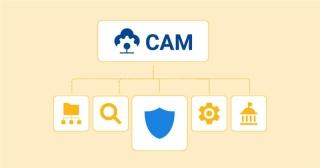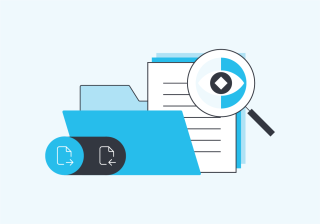The Five Pillars of CAM: Govern Data Across Systems
In the past few years, many project and relationship-based organizations have been forced to shift to remote or hybrid working. This has increased reliance on virtual collaboration systems such as Microsoft Teams.
Platforms like Teams are best suited to allow the necessary collaboration on hundreds or thousands of projects, relationships, matters, and engagements – whatever you may call them – that organizations may undertake over a year.
Beyond internal efficiency, you must always be conscious of preventing and reducing the risk of a cyberattack – or what we call a "bad day." Once hackers gain access to your organization's systems, they copy and delete data – often going months without being detected. If your data is ungoverned, you might not notice it happened.
In this blog, we'll highlight some governance practices that will help you keep your hybrid workspaces secure while fostering efficient collaboration.
Governance Spans Your Entire Environment
Organizations don't work in a silo or one system only. Most organizations have, on average, ten systems, including their document management system, CRM, HRIS, and Microsoft 365 applications, which include Teams, SharePoint Online, and others.
When left ungoverned, these systems will not be able to communicate with each other, and you will have to open each one to manually set up projects and security. This is highly inefficient and prone to error, leaving your organization vulnerable to non-compliance issues and breaches.
Solving These Challenges Is Easy!
Your governance strategy needs to consider the organization's many collaboration systems and how they work with each other. A unified strategy should be consistent across these systems to ensure security and avoid manually granting, updating, and restricting permissions.
Technology that integrates these systems and allows provisioning, classification, protection, movement, and minimization of data across them is key to achieving results.
Governance Goes Hand-in-Hand with Provisioning
How and where you initiate a project and where your end-users save their files is a crucial part of governance. Left on their own devices, users will save data on their personal drives and then forget where they saved it, leaving them unable to find relevant content to do their jobs and collaborate efficiently.
This practice creates data chaos.
Chaos needs to be governed by providing logical places for users to save data and adding context using metadata. These ensure that users can find their content, and the Risk Management team can understand each piece of data so as to secure it properly.
Proper Governance Takes an All-Hands Approach
Governance should be at your organization's core, and your processes should ensure everyone is responsible for it. It's an all-hands-on-deck approach, not something that needs to be left to your IT or Risk Management teams.
Think about it: your Marketing and Sales teams often share and transfer personal information and data about clients. These team members are responsible for this information and need to ensure they share and save it securely.
Any personal or sensitive data should be secured properly. If someone saves client addresses in their local drive and the organization experiences a breach, hackers will have access to that data — which can land your organization in a world of hurt.
Ultimately, governance is about tracking content across these systems, securing it, and ensuring data are deleted when the project is over. In other words, everyone is involved in governance.
Wouldn't it be lovely if there were a software solution to help automate these processes? Well, you're in luck!
How CAM Helps
CAM is a Software-as-a-Service platform (SaaS) for the adoption and governance of multiple collaboration systems. It allows organizations to provision, classify, protect, manage, and govern data, mitigating data chaos and reducing risks related to privacy and cybersecurity.
CAM enables organizations to create logical locations for users to store data. It provides rich, custom metadata, empowering users to locate documents and Risk Management teams to understand the business context to apply the proper security and data minimization policies.
CAM can help your organization establish Zero-Trust and Privileged Access Management policies on documents, folders, workspaces, etc., so that you can control who can access documents, in what manner, and more.
CAM integrates with Microsoft 365 (Microsoft Teams, SharePoint Online, OneDrive, OneNote, Planner, Lists), iManage, NetDocuments, file shares, and more.
If you want to learn more about CAM's provisioning capabilities, book a demo today and talk to one of our experts.


